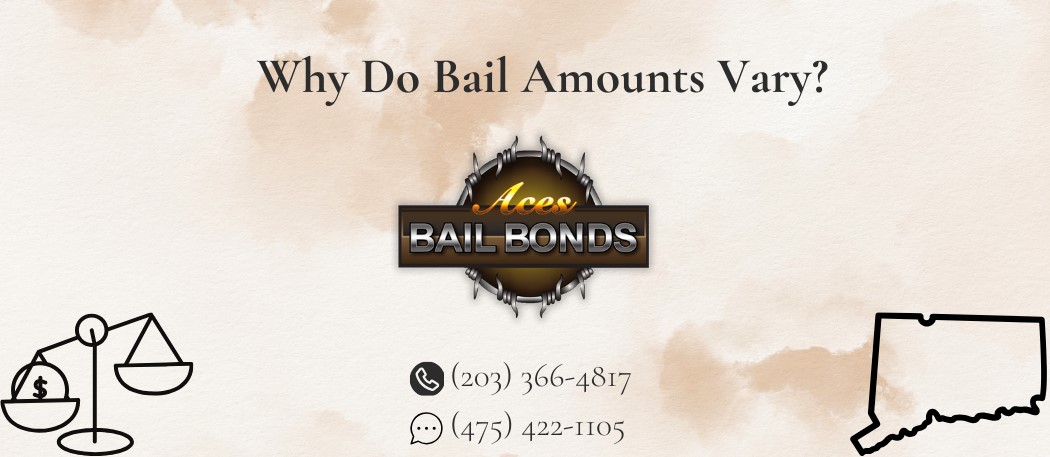Why Do Bail Bond Amounts Vary?
Bail is an important part of the criminal justice system, allowing defendants to stay free while awaiting trial. But bail amounts can differ greatly—even for similar charges. In Connecticut, judges consider many factors before setting bail. Understanding why bail amounts vary helps defendants, families, and the public see how bail works and why it’s not the same in every case.
1. Nature and Severity of the Crime
-
Misdemeanors: Less serious crimes (like petty theft or disorderly conduct) often have lower bail.
-
Felonies: Serious charges (armed robbery, assault, homicide) usually bring much higher bail. The harsher the possible sentence, the greater the risk of flight—and the higher the bail.
2. Risk of Flight
Judges assess whether a defendant might skip court.
-
Community Ties: A stable job, family, or long residence in Connecticut lowers risk.
-
Past Behavior: Prior failures to appear in court raise bail amounts.
3. Criminal History
-
Repeat Offenders: Prior convictions, especially violent ones, often mean higher bail.
-
First-Time Offenders: May receive lower bail, especially for non-violent crimes.
4. Public Safety Concerns
Judges consider community safety.
-
Violent Crimes: Offenses with weapons or vulnerable victims typically mean higher bail.
-
Severe Threats: In extreme cases, bail may be denied entirely.
5. Strength of the Evidence
-
Strong Case: More evidence against a defendant can mean higher bail, since conviction is likely.
-
Weak Case: Judges may set lower bail if the evidence is limited.
6. Financial Resources
Bail should ensure court appearance, not punish.
-
Ability to Pay: Judges may set amounts a defendant can realistically post.
-
Wealthier Defendants: Sometimes face higher bail because small amounts don’t act as deterrents.
-
Low-Income Defendants: May qualify for reduced bail or release on recognizance (ROR).
7. Pretrial Release Programs in Connecticut
Some defendants may avoid high cash bail through:
-
Supervised Release – monitored but no cash bail.
-
Electronic Monitoring – GPS or house arrest as a condition of release.
8. Judicial Discretion
Each judge weighs factors differently. Two similar cases may see different bail amounts depending on:
-
Case details.
-
The judge’s philosophy (lenient vs. strict).
-
Sentencing and bail trends in Connecticut courts.
9. Legal Representation
Skilled attorneys and bail bond agents can influence bail by:
-
Negotiating lower bail.
-
Requesting alternatives like supervised release.
10. Guidelines and Statutory Limits
-
Bail Schedules: Suggested amounts for common charges.
-
Statutory Limits: Some crimes in Connecticut have minimum or maximum bail amounts set by law.
11. Socioeconomic Factors
Wealth and resources impact bail outcomes. This has led to bail reform in Connecticut, focusing on fairness and reducing pretrial detention for low-risk defendants.
12. Public Opinion and Social Climate
-
High-Profile Cases: Media coverage can pressure judges to set higher bail.
-
Legislative Changes: Public opinion and advocacy efforts shape ongoing bail reform.
13. Victim and Community Impact
Judges may weigh victim impact statements or community safety concerns when deciding on bail.
Conclusion
Bail amounts vary in Connecticut based on crime severity, criminal history, risk of flight, public safety, and many other factors. Judges balance a defendant’s rights with community protection, but outcomes differ case by case.
At Aces Bail Bonds, we help clients and families understand bail, navigate surety bail bonds, and work with the courts to secure release quickly and fairly.
📞 Need help now? Call (203) 344-7483 for 24/7 Connecticut bail bond services.

